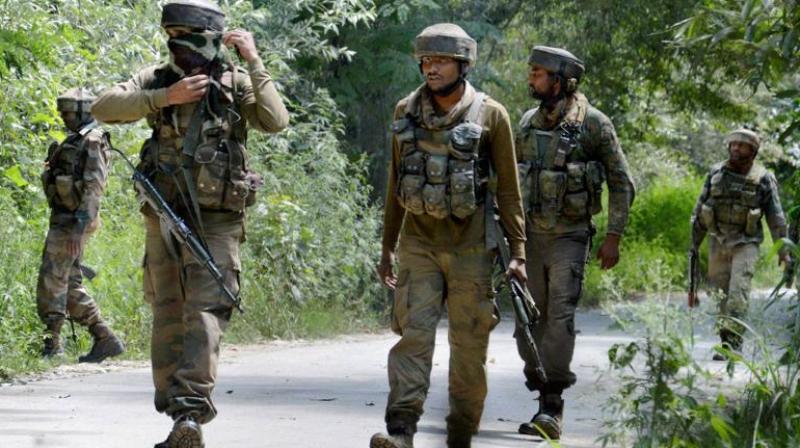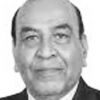Challenges for the new leadership in Kashmir

Jammu and Kashmir has a new leadership at the helm with the departure of its long-standing and well-respected governor, N.N. Vohra. With the state under Governor’s Rule, the new incumbent is now head of the state and its chief executive too. He has a team of experienced advisers who will need to ensure the governor is briefed appropriately and made conversant with the challenges facing J&K and, through it, the nation. The situation in J&K is highly complex and for someone completely new to the environment it will take some time to grasp the core issues and their nuances. That is why the advisers must lead the governor through initial briefings in a deliberate manner, concentrating on each challenge, its gravity and effect on the stability and security of the state. Besides anything else, it is history that needs to be focused upon in two clear segments — pre-1989 and after the start of the proxy war, which entirely altered the environment. A clear understanding of the aspirations of different segments of the population must be grasped. Ladakh, including Kargil; Kashmir, including all its different segments; and the Jammu division, with its own diversity — all have different perceptions of the challenges. The governor will obviously meet groups of people from all these areas and will need to be a quiet listener. His political experience will stand him in great stead in this exercise. The mismatch in perceptions and ideas will have to be carefully identified to extract where challenges lie and how they must be prioritised. Besides these meetings, the governor will be well advised to allow access to representatives of different groups, cutting across sub-regions. Politicians, teachers and academics, businessmen, prominent media people, lawyers, youth leaders, women’s organisations, administrators and many such others will give the governor their differing perceptions and ideas, which are often lost in the maze of security-related focus that J&K sees at most times. One of the most important issues which will emerge in all these sunwais (interactions) is the aspect of administrative accountability for the large financial outlay that J&K receives and whose positive effect at the population end is always considered doubtful. Governance before anything must be the governor’s priority. There are languishing projects which were under the former governor’s gaze for revival with additional funds which the state is seeking. These must get impetus and the credibility of ensuring project completion must be demonstrated at least in some projects. In the case of the Kashmir Valley, my advice has always been to make serious attempts to give two continuous good winters to the people; “good” here means no shortages of resources, adequate snow clearance, functioning medical centres when the heavy snow comes and rescue and relief wherever required.
Noticeably, security is being given second priority among the challenges before the leadership. That is because it remains a work in progress, though much can be done beyond just the conduct of operations to neutralise terrorists. If at the outset the governor can give importance to the Unified Command and comprehend its utility beyond just being a meeting and conference point for the security agencies, it would be a transformation in approach. With infiltration attempts on the rise, the aim of the Deep State in Pakistan is to work towards the next season in terms of filling terrorist numbers and leadership, both being deficient in north Kashmir. The Army must remain focused on preventing this. In south Kashmir, the three challenges in particular are the increasing recruitment of local youth, the killing of local policemen to cause turbulence in the ranks of the J&K police and the attempt to radicalise young people. The efforts towards neutralising all three have been in progress, but there is apparent insufficient success in these. There have been successful efforts in obtaining the cooperation of the clergy to message the youth on the needs to remain moderate in outlook and follow the traditional path of faith in the Valley. These efforts must multiply manifold and social media platforms should be provided for these. Attempts to run such programmes from New Delhi must be curbed except in the field of professional content writing. There is nothing like giving a local colour to the communication efforts with youth. For this, dedicated organisations have to come up under the Unified Command with pooling of resources. A divided effort in this field will not get us the dividend we seek. As to the security of local policemen and soldiers on leave, a community security system must be established, exploiting the negative public response towards terrorists. Policemen can find their own solutions locally if sufficient focus and empowerment is given to them.
As regards the issue of radicalization, the problem has to be recognised, understood and accepted. There is a trend in Kashmir to deny the issue and relate the current practices with the manner in which the faith has always been practiced. This denial is not doing any good and even intellectuals kowtow to it, more out of fear than anything else. The necessity of getting the intelligentsia to remove their fear and speak out against the atrocities of terrorists is essential to trigger a pushback against radicalism and terror.
Finally, two oft-repeated points for the leadership on the basis of long experience. The Pir Panjal must cease to be a physical and mental barrier between the Jammu and Kashmir regions. The leadership must work towards creating more opportunities for the meeting of minds to eventually remove suspicions and fears about the other. The second is that political activity at the grassroots must be encouraged following the panchayat and municipal polls. Outreach activity by the political community, with officials doing follow-up, will greatly assist in confidence-building. The security forces must consider it a part of their responsibility to enable such activity through creation of a secure environment in areas which have not witnessed this for long.
There are many more serious issues to contend with — including the question of Article 35A. The leadership must keep these in mind but work incrementally towards creating an environment to enable more interaction before serious discussions on these matters.

